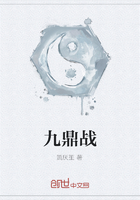68] reckoned among the chemical senses, and we can expect a ****** relation only between the photochemical processes ill the retina and the sensations. Now, we know from experience that different kinds of physical light produce like chemical disintegrations, and this explains in general the possibility mentioned above, of having the same sensation from many different kinds of objective light. According to the principle of parallelism between changes in sensation and in the physiological stimulation (p. 45), it may be assumed that the various physical stimuli which cause the same sensation all produce the same photochemical stimulation in the retina, and that altogether there are just as many kinds and varieties of the photochemical processes as kinds and varieties of distinguishable sensations. In fact, all that we know, up to the present time, about the physiological substratum of light-sensations is based upon this assumption. The investigation of the physiological processes of stimulation through light, has not yet given any further result than that the stimulation is in all probability a chemical process.
25. The relatively long persistence of the sensation after the stimulation that originated it, is explicable on the assumption that the light-stimulations are due to chemical processes in the retina (3, p. 42).
This persistence is called, with reference to the object used as stimulus, the after-image of the impression. At first this after-image appears in the same brightness and color as the object: white when the object is white, black when it is black, and if it is colored, in the same color.
These are the positive and like-colored after-images. After a short time it passes, in the case of achromatic impressions, into the opposite grade of brightness, white into black, or black into white; in the case of colors, it passes into the opposite or complementary color. These are the negative and complementary after-images. If light-stimuli of short duration [p.
69] act upon the eye in darkness, this transition may be repeated several times. A second positive after-image follows the negative, and so on, so that an oscillation between the two phases takes place. The positive after-image may be readily explained by the fact that the photochemical disintegration caused by any kind of light, lists a short time after the action of the light. The negative and complementary after-images can be explained by the fact that disintegration in a given direction causes a partial consumption of the photochemical substance most directly concerned, and this results in a corresponding modification of the photochemical processes when the stimulation of the retina continues.
26. The origin of a part of the phenomena included under the name light contrasts and color-contrasts is very probably the same as that of the negative and complementary after-images. These phenomena consist in the appearance of simultaneous sensations of opposite brightness and color in the neighborhood of any light-impression. Thus, a white surface appears to be surrounded by a dark margin, a black surface by a bright margin, and a colored surface by a margin of the complementary color. These phenomena, which are called "marginal contrasts" when they are limited to the immediate neighborhood of the object, are in part at least nothing but negative or complementary after-images that are simultaneously visible in the immediate neighborhood of the impression as a result of continual weak ocular movements. Whether there is also an irradiation of the stimulation is a question; its existence still wants certain proof. The fact that these contrasts increase as the light becomes more intense, just as after-images do, speaks for their interconnection with the latter. In this respect, this physioloical contrast differs essentially from certain psychological contrast-phenomena, with which it is generally confused. The latter are closely connected in [p. 70] their rise, with numerous other forms of psychological contrast, so that we will not discuss them until later, when we enter into the general treatment (§17, 9) of such phenomena.
26a. If we take the priciple of parallelism between sensation and physiological stimulation as the basis of our suppositions in regard to the processes that occur in the retina, we may conclude that analogous independence in the photochemical processes corresponds to the relative independence which appears between achromatic and chromatic sensations. Two facts, one belonging to the subjective sensational system, the other to the objective phenomena of color-sensation can be most naturally explained on this basis.
The first is the, tendency that every color-sensation shows, of passing into one of pure brightness when the grade of its brightness decreases or increases. This tendency is most simply interpreted on the assumption that every color-stimulation is made up of two physiological components, one corresponding to the chromatic, the other to the achromatic stimulation.














